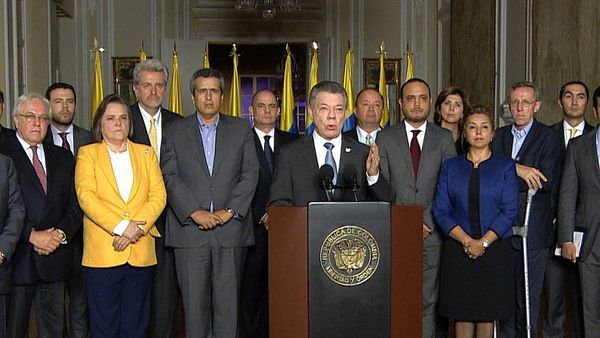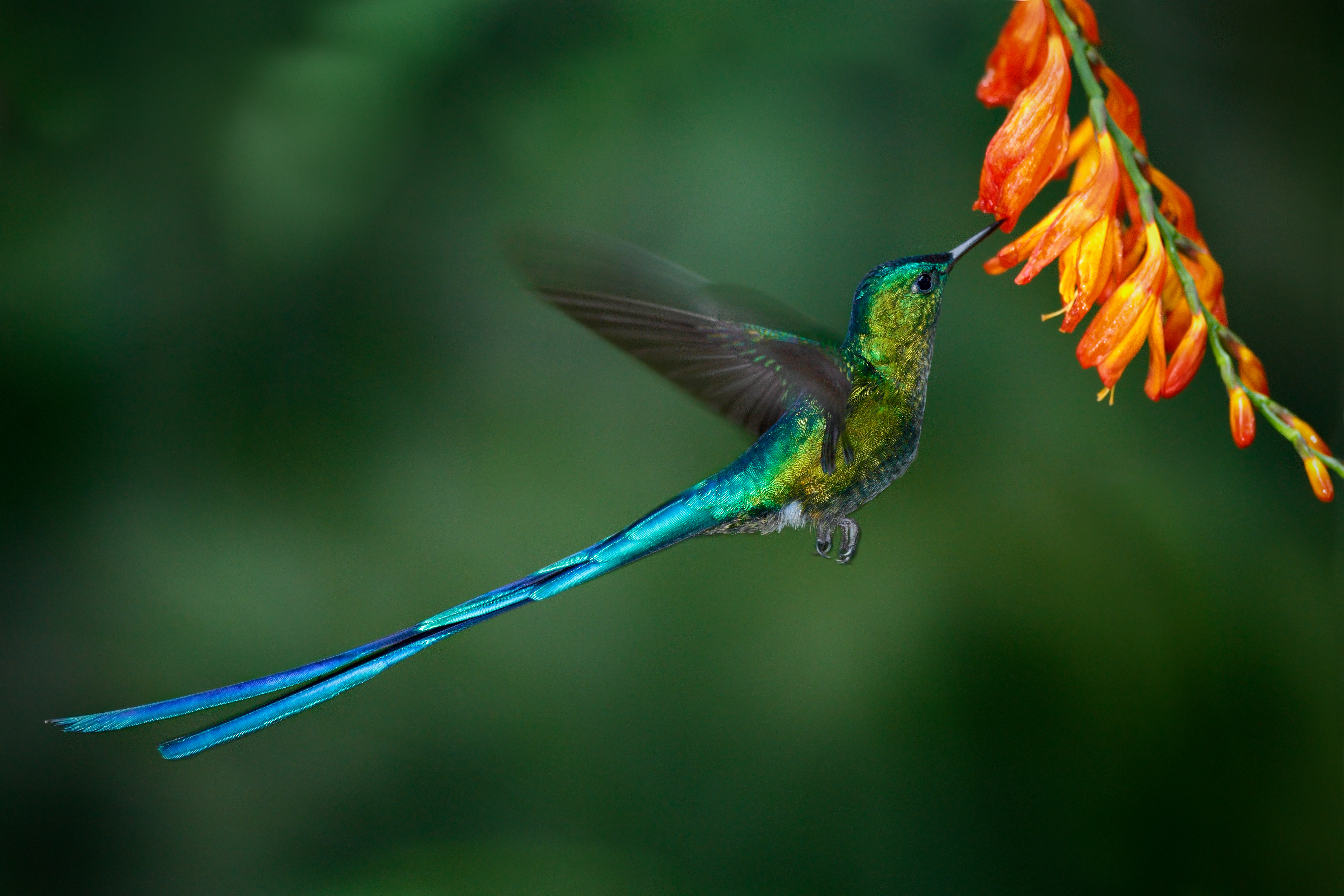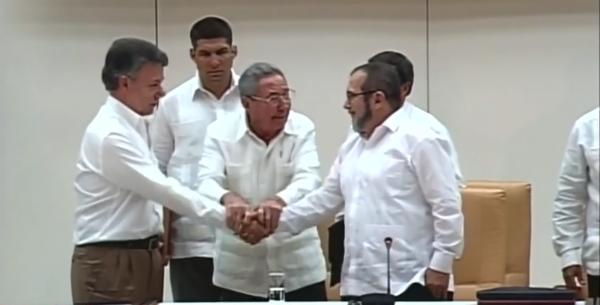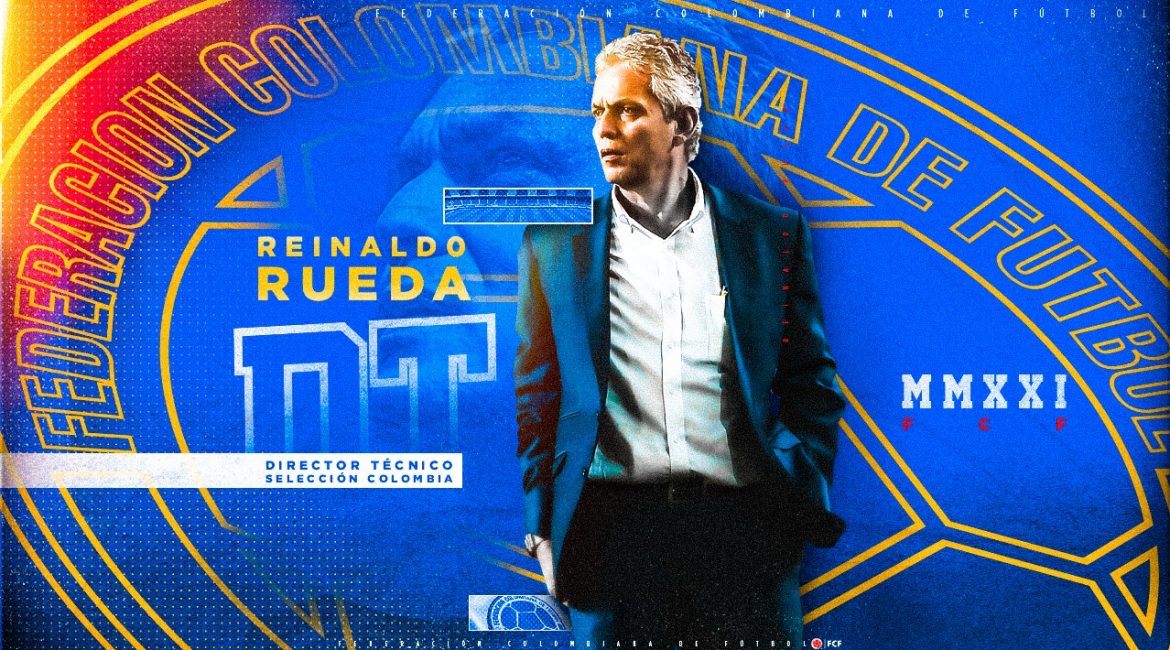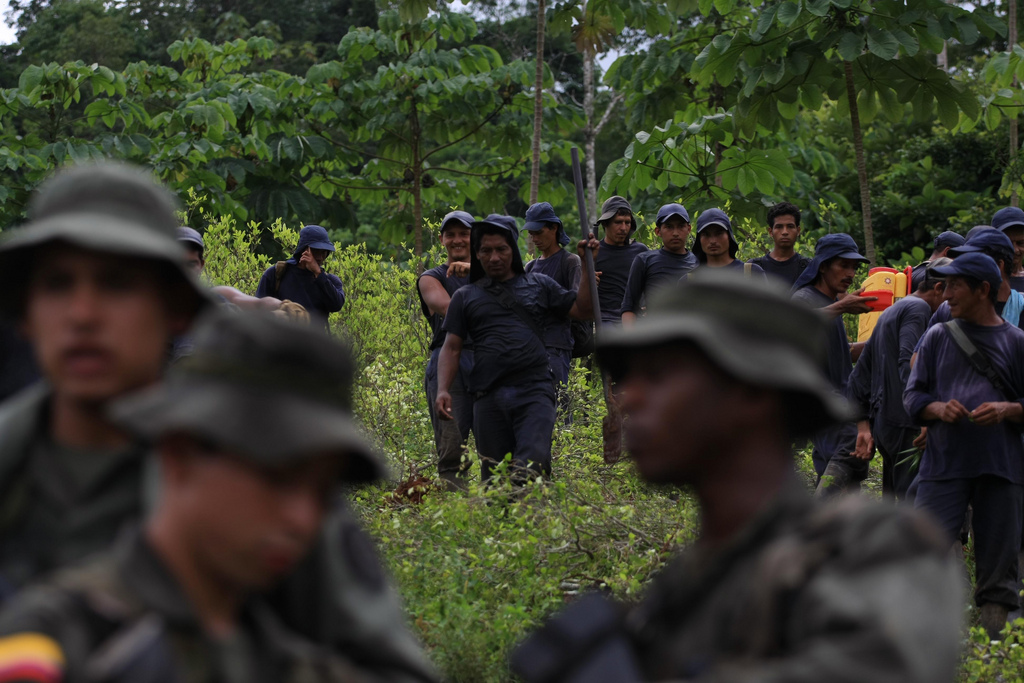
Police escort coca erradicators during a working day of manual eradication in Taraza , Colombia, Tuesday, June,17, 2008. Photo: Policía Nacional de los Colombianos / AP Photo / William Fernando Martinez)
A court ruling in California will likely kill off plans for renewed coca fumigation in Colombia. So what happens now?
A US court case that casts fresh doubts on the safety of glyphosate herbicide could shelve Colombian plans to reinstate the controversial practice of aerial spraying of drug crops.
The widely-used weed-killer – which had been sprayed from planes and helicopters for 30 years on coca and marijuana plantations – was banned in Colombia in 2015 after the World Health Organisation cancer experts found it “probably carcinogenic” to humans.
But burgeoning cocaine production and pressure from the US to forcibly eradicate coca crops had forced the incoming administration to announce it will “look to restart spraying”, this time with low-flying drones that can deliver herbicides “not banned by the constitutional court”, incoming President Duque told El Tiempo before his inauguration.
That is now unlikely given this month’s historic US court ruling which awarded USD$289 million in damages to a 46-year-old terminally-ill Californian. The groundkeeper had sued chemical giant Monsanto, claiming its herbicides had contributed to his cancer. The San Francisco trial jury found the chemical giant – which first marketed glyphosate as the popular Roundup brand in 1974 – was negligent in not warning of its product’s dangers. Monsanto (which is now owned by Bayer) claims that glyphosate is not toxic to humans and will appeal the ruling.
The US court decision will have far-reaching effects world-wide, but particularly in Colombia. Glyphosate is the key ingredient in over 750 agricultural products globally. When introduced 40 years ago, it was hailed as a miracle chemical, the ‘penicillin’ of weed control. But its heavy use has left traces in the water cycle – it tests in 70% of rainwater samples in the US, according to federal hydrologists there – with conflicting scientific evidence as to its safety.
This evidence can best be described as contradictory, with a plethora of scientific studies stating it is non-toxic to humans, but a meta-study by WHO’s International Agency Research on cancer declared it a “probable” cause of human cancer in 2015.
Monsanto declared this conclusion to be flawed and based on selective data, but the company itself has now been accused of pushing biased research and cherry-picking favourable results. This was a key feature of the San Francisco case when defence lawyers uncovered company emails showing employees to have “ghost-written” reports supporting the herbicide’s use, as reported in the UK’s Guardian.
In Colombia, aerial spraying of herbicides has been a highly controversial cornerstone of the war on drugs over four decades. According to El Espectador newspaper, under the Plan Colombia deal with the US government, 1,800,000 million hectares of coca field were fumigated with glyphosate from 1999 until its ban in 2015.
In fact, no-one knows how much of the chemical has been applied to Colombia’s environment since its first use in 1978, wrote the Colombian national paper in July. One constant has been a polemical process of “broken agreements” with “little national sovereignty.”
Opposition has come from rural farmers whose legitimate crops have been destroyed by the chemical when it blows over their fields and communities and environmentalists who have seen devastating effects on wilderness areas. Many urban Colombians are also uneasy with widescale defoliation of a country lauded for its biodiversity.
Some commentators go further: Monsanto waged a “chemical war” in Colombia, claims political journalist W T Whitney writing in CounterPunch magazine in 2015. “Spraying has contributed to fear and poverty” among rural populations – particularly Afro-Colombians and indigenous peoples, and driven conflict-related displacement by forcing families off the land and into cities, into neighbouring countries.
Cocaine cartels have long taken advantage of these concerns by encouraging coca farmers to sow the bushes in amongst licit crops, or in national parks where spraying was more restricted. More recently, there was an increase in coca cultivation in border areas with Ecuador after the neighbouring country enforced a ban on the frontier.
Fumigation was also a factor in negotiations with the FARC who traditionally controlled coca-growing zones, thus the 2015 ban in Colombia – usefully supported by the WHO cancer link – was widely welcomed as a key part of the peace process.
But not by all. More hawkish politicians in Colombia have long argued that aerial spraying was a safe and essential tool in the war on drugs and ending it was a gift to the cartels. Now with the slow take-up of manual coca bush eradication and crop-replacement – and the more general paralysis of development programs in rural areas – the expected coca boom has indeed occurred with 200,000 hectares planted in 2017, giving an estimated 900 tonnes of cocaine.
Faced with this increase, it was in fact ex-president Santos – the same who banned spraying in 2015 – who first announced the plan for renewed delivery by drones. The low-flying small craft could aim glyphosate with higher accuracy and avoid wind drift associated with contamination of food crops and environmental damage, explained Santos after a meeting of the National Narcotics Council in June, and reported by Reuters news agency.
This left a tough call for the Washington-friendly Duque administration: to maintain the ban (which will upset the US) or restart spraying and court in-country dissent. The Monsanto California case may have made that decision easier by limiting his options to just one: don’t spray.
Other options are not much more palatable. Just a few days before the California ruling was announced, Colombia’s incoming defence minister Guillermo Botero said that coca eradication would now be “obligatory”, dashing the delicate agreements thrashed out with rural communities caught between ruthless cartels – who often force farmers to cultivate coca – and voluntary crop replacement schemes.
Without spraying, and with little progress on development programs that might eventually reduce the coca crop, the next step will be the forced digging up coca bushes by hand – dangerous work in rural areas which brings a violent response from drug gangs and with farming communities caught in the crossfire. The drug war just got hotter.
Gerald Barr

